Use these easily available household items when your motor isn’t peeing. They are small, pretty much free and could save your fishing trip one day.
More...
Not taking the marsh seriously and failing to prepare can lead to disaster for an inshore angler. Don’t be naive!
We want to have fun when we go fishing, and that is virtually guaranteed when we are prepared. So here is what to do when your motor isn’t peeing.
Outboard Motor Isn’t Peeing
First off, what do I mean by “peeing”?
Most outboard motors are equipped with a cooling system using outside water.
Outside water is circulated through cooling passages before leaving through the motor’s “pee hole”.
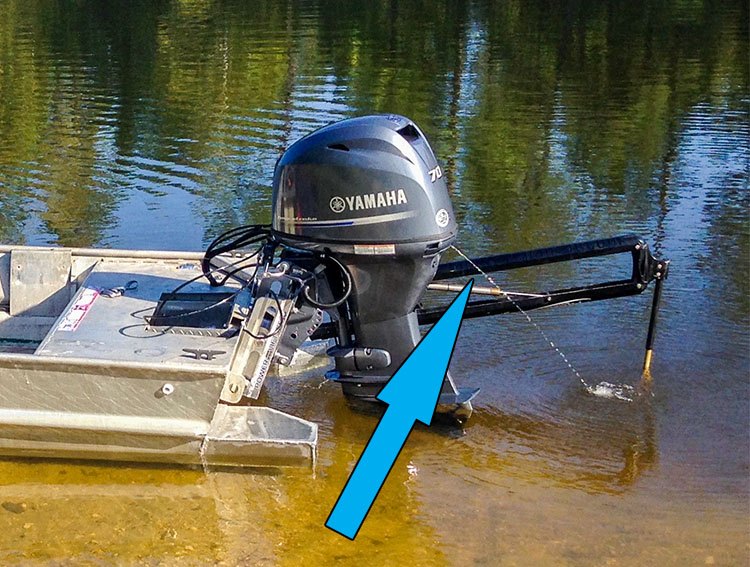
You’ve seen it! It looks like the motor is taking a whizz everywhere it goes.
This way the motor stays cool and doesn’t over heat. But if it were to stop peeing…
Why is it dangerous when a motor isn’t peeing?
An outboard could overheat and cease to function, leaving you stranded with no way on.
Do you want to be stuck drifting across Breton Sound? Nope!
What's the best fix when your motor isn't peeing?
Two things:
- clear the water intake
- clear the pee hole
Clearing the water intake is easy: trim up the motor, inspect the intake and remove any debris fouling its operation.
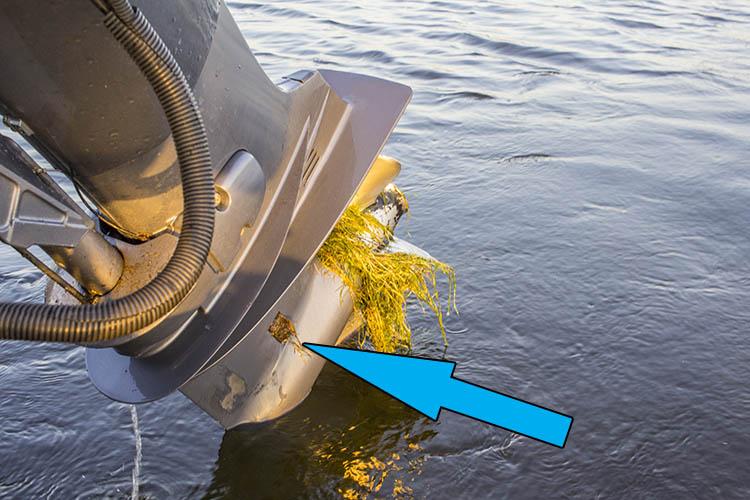
Running through thick grass is virtually a guaranteed method to clog the water intake on your lower unit.
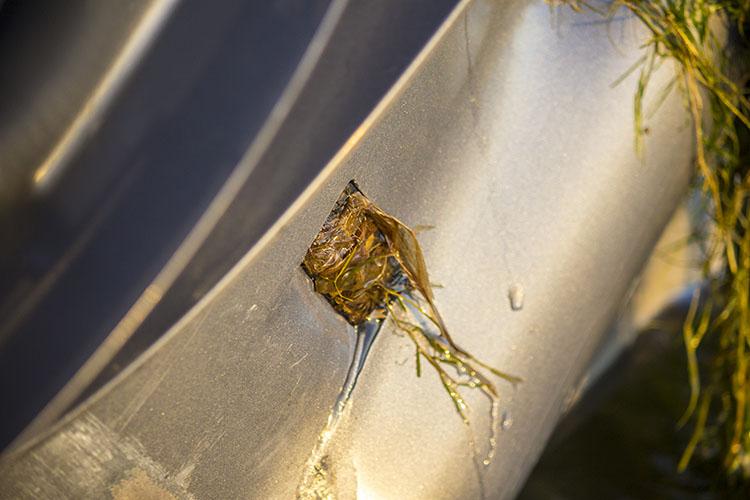
The clog you see above is easily wiped away with your hand.
Sometimes that’s all it takes when your motor isn't peeing. However, if that doesn’t do it, then you need to clear the pee hole.
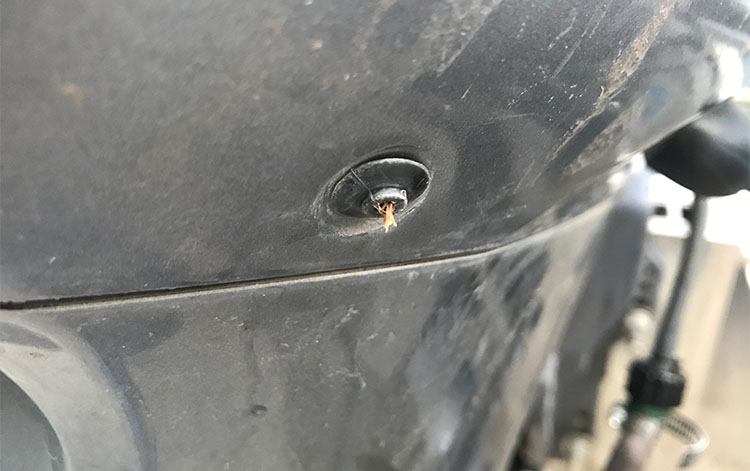
This is a dead giveaway when your motor isn’t peeing.
Clearing the pee hole isn’t easily done with your fingers. You need one (or both) of these tools:
- thumb tack
- stripped twist tie
- weed whacker line (not shown)
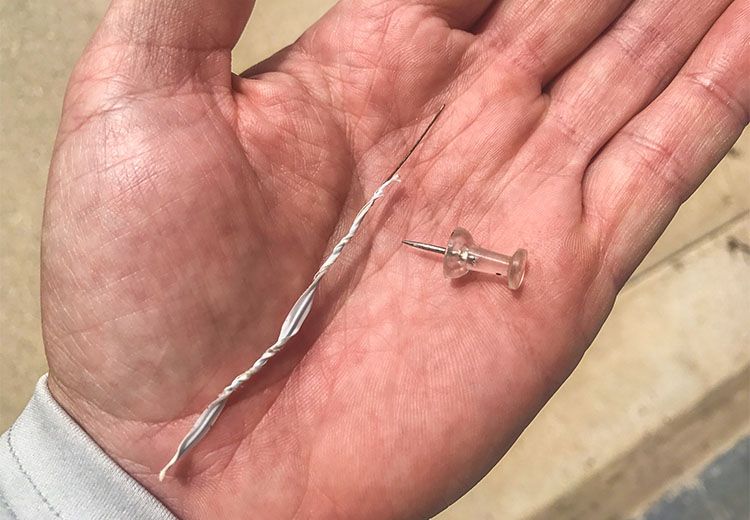
Use the thumb tack to clear clogs at the pee hole and twist tie (with the coating stripped off) to clear clogs further upstream when your motor isn't peeing.
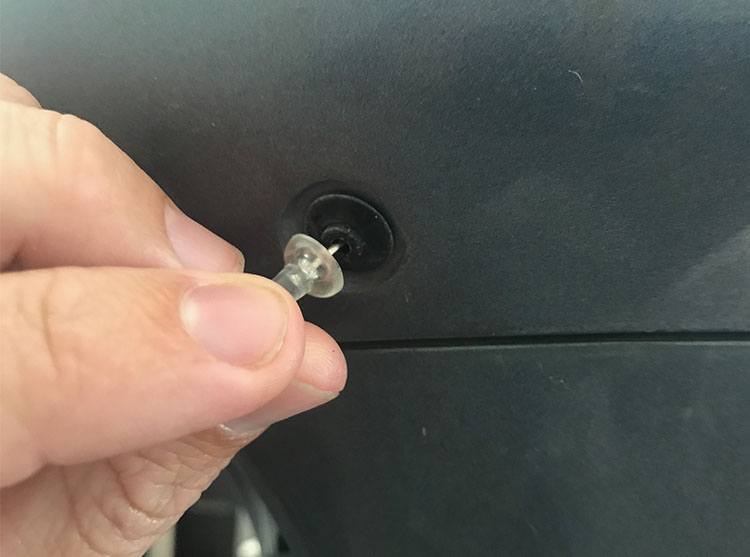
Why not just stay away from thick grass?
It's a good question, because it's an obvious way to to avoid a situation where your motor isn't peeing.
Some of Louisiana's best inshore fishing – and I mean the absolute best – is found around aquatic grass (that is usually thickest near river water).
This grass provides forage and cover to developing juvenile fish and other kinds of bait, with good examples being crab, shrimp, potbelly minnows and more.
Yes, these grass mats are essentially a buffet for one of our favorite inshore species: the mighty, drag pullin' redfish!
Sight Fishing Mastery School takes you from zero to hero when it comes to sight fishing redfish in these grass-laden ponds.
Conclusion
There are many risks you take when going on a fishing trip in Louisiana's marsh, and having a situation where your motor isn't peeing is one of them.
Proper planning and being prepared is a great way to mitigate these risks and make your fishing trips more enjoyable.
As long as you maintain your outboard and have these items on hand you will always be able to clear clogs when your motor isn’t peeing.
Do you have suggestions on how to clear clogs when your motor isn't peeing? Post them up below!

Yeah, you should definitely do 100 hour maintenance on your motor sometime in three years. Thanks for reading, Steve.
Hi,
Could the motor also need the impeller changed? I have never changed it since I had the boat(3 years) Don’t know if it was changed before I brought the boat. I’m gonna change it but I’m gonna try some of the other ideas also. I have a 150 mercury.
I use electrical wire coated to clean my Pee hole. About the Size that runs the lights.
That’s an excellent technique and a great idea. Thanks for sharing it here!
Hey Devin,
I had a clogged pee hole and nothing would clear it… I did the static flush. I did the active flush, I did the weed eater line – it would only go in 3/4 of an inch and then it was like a rock. I was going to take it in and called a local mechanic to schedule. He told me that before I spend a lot of money chasing a clog, try getting a can of compressed air like they use to clean computers. It was $8 at Walmart. I put that little red straw in there 3/4 of an inch and pulled the trigger. I could hear the line clear almost immediately. Motor pisses better now than it ever did. I left the air can in the boat as part of my emergency tool kit.
I thought this was too good a tip to keep to myself.
Sounds like you need to take your motor in to a mechanic. It could be a number of issues.
Last ran 3months ago! 40horse Yamaha , pee hole,and line clear! Vents clear . still no pee!
Hey George, thanks for commenting, but I think you’re commenting on the wrong article?
Maybe you meant this one: https://www.lafishblog.com/this-small-wintertime-measure-could-save-your-ass/
Vacuum pack a blanket. In case kids are the ones in the water or older person. Think shock.
This is possible, assuming that everything else is working correctly, especially the impeller.
It could be. If so, you’d have to flush your motor.
Do you know if mud can be trapped elsewhere in the motor other than the pee hole ?
Thanks for the tips on clogged outboard motor. I live in Canada and on a river. It’s muddy , could the mud be trapped in the motor somewhere and it won’t piss on static flush ?
Carson, at idle you should see a steady stream. No droplets, no breaks in the stream, just a steady stream. As RPM’s increase you should see water pressure increase.
How much water should be coming out?
100% Stan! Anybody reading this should heed what you are saying and do exactly that because it will give them a heads up long before the motor overheats.
I have on installed and pay attention to the water pressure while running, especially after a hole shot.
Devin, the article is great but after many years of dealing with the pee hole not working on a trip I added an additional gauge to my console . We all need a water pressure gauge mounted. When grass stops up the lower unit the pressure goes to zero (0). You better stop!! If not a burned up motor. Pee hole is an indication of water flowing but you can still have pressure. Grass dirt and sand can clog up the pee hole but you still have water pressure. Stan
That’s a great tip. Thanks for sharing!
Heavy leader material works as well (100# Fluorocarbon.)
100%
Weed eater string works great to clear the tattle tail
Thanks, Mike. That’s a great idea.
A piece of weed eater line works well also